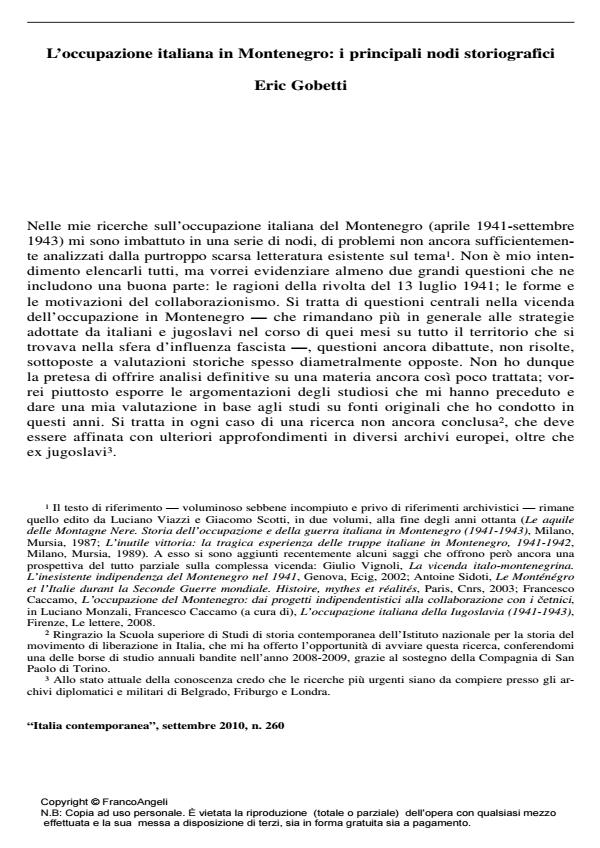L’occupazione italiana in Montenegro: i principali nodi storiografici
Titolo Rivista ITALIA CONTEMPORANEA
Autori/Curatori Eric Gobetti
Anno di pubblicazione 2011 Fascicolo 2010/260
Lingua Italiano Numero pagine 19 P. 475-493 Dimensione file 327 KB
DOI 10.3280/IC2010-260007
Il DOI è il codice a barre della proprietà intellettuale: per saperne di più
clicca qui
Qui sotto puoi vedere in anteprima la prima pagina di questo articolo.
Se questo articolo ti interessa, lo puoi acquistare (e scaricare in formato pdf) seguendo le facili indicazioni per acquistare il download credit. Acquista Download Credits per scaricare questo Articolo in formato PDF

FrancoAngeli è membro della Publishers International Linking Association, Inc (PILA)associazione indipendente e non profit per facilitare (attraverso i servizi tecnologici implementati da CrossRef.org) l’accesso degli studiosi ai contenuti digitali nelle pubblicazioni professionali e scientifiche
Questo saggio affronta alcuni dei principali nodi storiografici di una vicenda ancora non sufficientemente studiata: l’occupazione italiana in Montenegro durante la seconda guerra mondiale. Nella prima parte l’autore evidenzia ragioni e obiettivi della rivolta popolare contro gli occupanti del 13 luglio 1941, attraverso una disamina sia degli errori commessi dalla diplomazia fascista nel tentativo di costituire uno Stato indipendente collaborazionista, sia della particolare condizione socio-politica della regione. La seconda parte del testo si concentra sulle ambiguità che caratterizzano la collaborazione fra l’esercito italiano e il movimento nazionalista serbo dei cetnici. L’aspetto più rilevante è la contraddizione fra l’alleanza militare in funzione anticomunista e la situazione internazionale che vede schierati su fronti opposti l’Italia fascista e il governo jugoslavo in esilio, da cui i cetnici dipendono. L’autore evidenzia tuttavia la concordanza di interessi, non solo contingenti, fra il leader cetnico Draza Mihailovic e il governatore militare italiano del Montenegro Alessandro Pirzio Biroli.
Parole chiave:Seconda guerra mondiale, Montenegro, cetnici, occupazione italiana, rivolta montenegrina del 13 luglio 1941, collaborazionismo
Eric Gobetti, L’occupazione italiana in Montenegro: i principali nodi storiografici in "ITALIA CONTEMPORANEA" 260/2010, pp 475-493, DOI: 10.3280/IC2010-260007